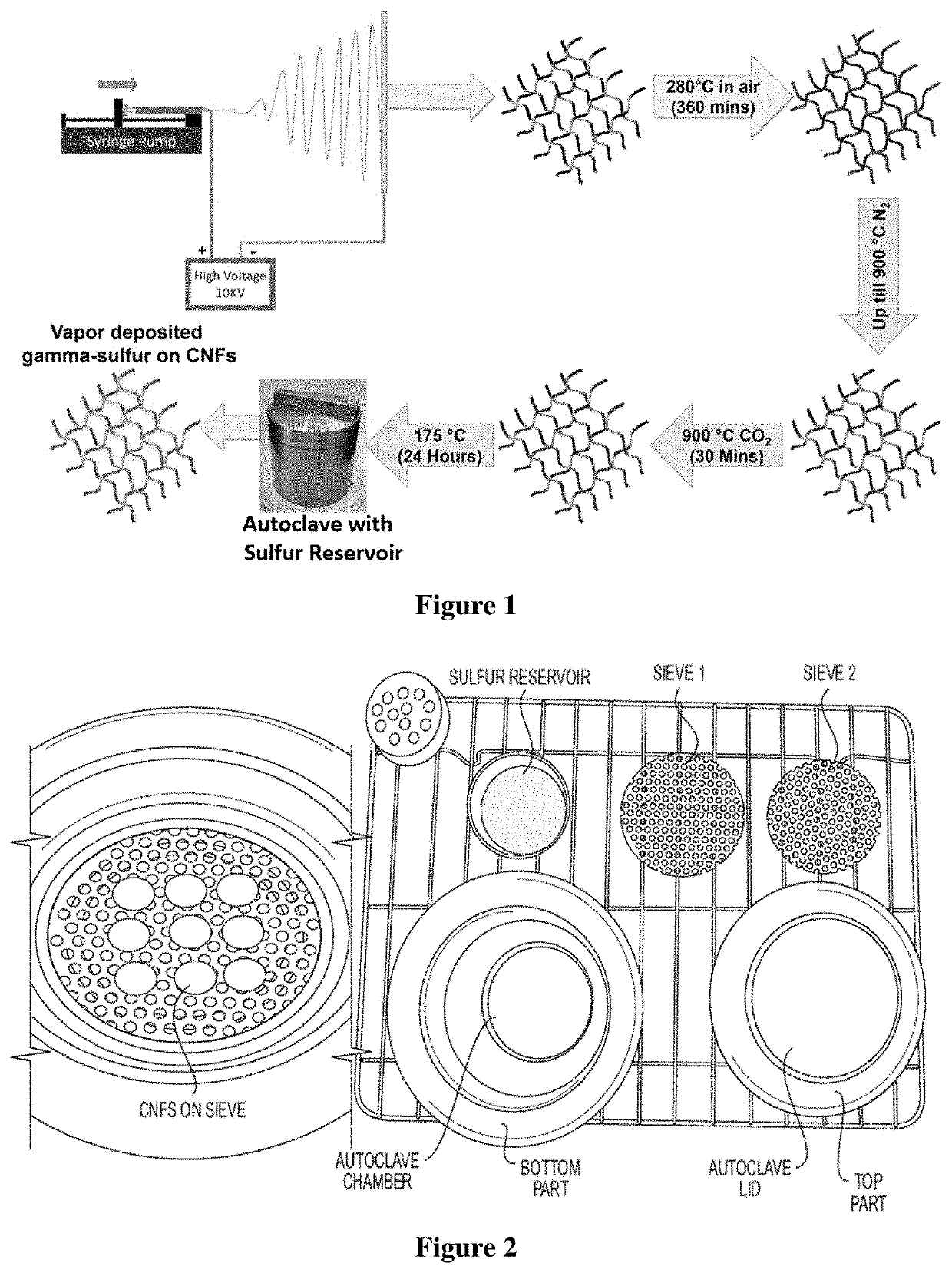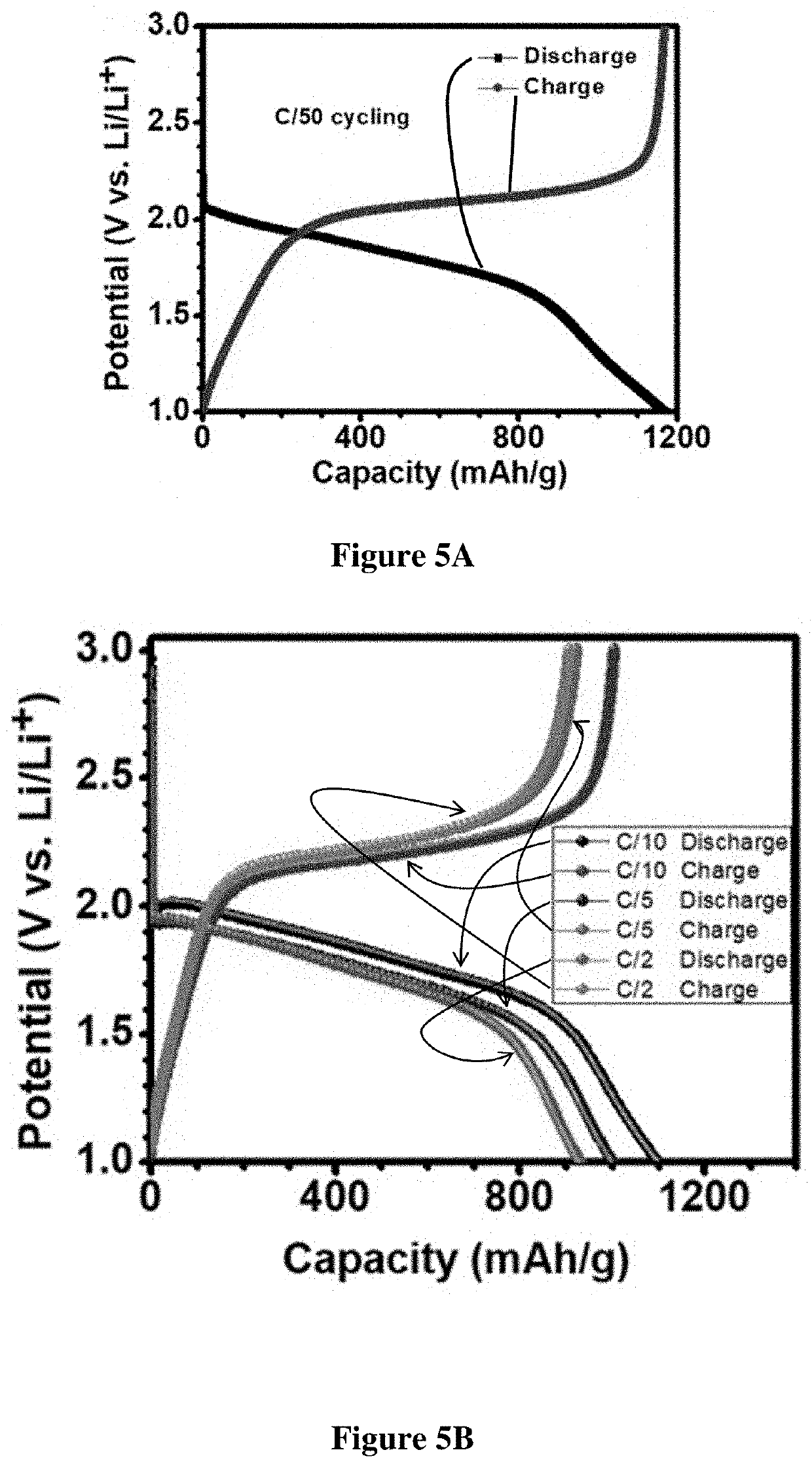Synthesis of gamma monoclinic sulfur and sulfur batteries containing monoclinic sulfur
a technology of monoclinic sulfur and gamma monoclinic sulfur, which is applied in the field of synthesis of gamma monoclinic sulfur and sulfur batteries containing monoclinic sulfur, can solve the problems of uncontrollable deposition of sulfide species on the lithium metal anode, low material utilization during the redox process, and numerous challenges of the current li-s system, so as to avoid polysulfide formation and excellent mechanical stability
- Summary
- Abstract
- Description
- Claims
- Application Information
AI Technical Summary
Benefits of technology
Problems solved by technology
Method used
Image
Examples
examples
[0175]The following examples are illustrative, but not limiting of the methods and compositions of the present disclosure.
[0176]The following materials were employed throughout the examples, Polyacrylonitrile (PAN, Mw 150 000 g / mol), N, N-Dimethylformamide (DMF, purity 99.8%), Sulfur (S, purity 99.998% trace metals basis), Ethylene carbonate (EC, purity≥99%, acid<10 ppm, H2O<10 ppm), Diethyl carbonate (DEC, purity≥99%, acid<10 ppm, H2O<10 ppm) and Lithium hexafluorophosphate (LiPF6, Purity≥99.99% trace metals basis, battery grade) were obtained from Sigma Aldrich. All chemicals were used without further processing.
Synthesis of Carbon Nanofibers (CNFs):
[0177]The free-standing carbon nanofibers were made by electrospinning Typically, 10 wt % Polyacrylonitrile, PAN (Mol wt. 150,000, Sigma Aldrich) was added to N, N-Dimethylformamide and stirred overnight to form a polymeric blend. This blend was then loaded into a Becton Dickinson 5 mL syringe with a Luer lock tip and an 18-gauge stain...
PUM
| Property | Measurement | Unit |
|---|---|---|
| temperature | aaaaa | aaaaa |
| temperature | aaaaa | aaaaa |
| temperature | aaaaa | aaaaa |
Abstract
Description
Claims
Application Information
 Login to View More
Login to View More - R&D
- Intellectual Property
- Life Sciences
- Materials
- Tech Scout
- Unparalleled Data Quality
- Higher Quality Content
- 60% Fewer Hallucinations
Browse by: Latest US Patents, China's latest patents, Technical Efficacy Thesaurus, Application Domain, Technology Topic, Popular Technical Reports.
© 2025 PatSnap. All rights reserved.Legal|Privacy policy|Modern Slavery Act Transparency Statement|Sitemap|About US| Contact US: help@patsnap.com



